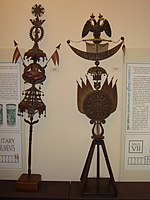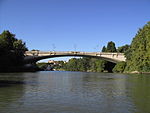Stadio Flaminio
1959 establishments in ItalyA.S. LodigianiFootball venues in ItalyNational stadiumsOlympic football venues ... and 5 more
Pier Luigi Nervi buildingsRome Q. II ParioliRugby union stadiums in ItalySports venues in RomeVenues of the 1960 Summer Olympics

The Stadio Flaminio is a stadium in Rome. It lies along the Via Flaminia, three kilometres northwest of the city centre, 300 metres away from the Parco di Villa Glori. The interior spaces include a covered swimming pool, rooms for fencing, amateur wrestling, weightlifting, boxing and gymnastics.
Excerpt from the Wikipedia article Stadio Flaminio (License: CC BY-SA 3.0, Authors, Images).Stadio Flaminio
Largo Mario Mazzuca, Rome Parioli
Geographical coordinates (GPS) Address External links Nearby Places Show on map
Geographical coordinates (GPS)
| Latitude | Longitude |
|---|---|
| N 41.926955555556 ° | E 12.4723 ° |
Address
Stadio Flaminio
Largo Mario Mazzuca
00196 Rome, Parioli
Lazio, Italy
Open on Google Maps








